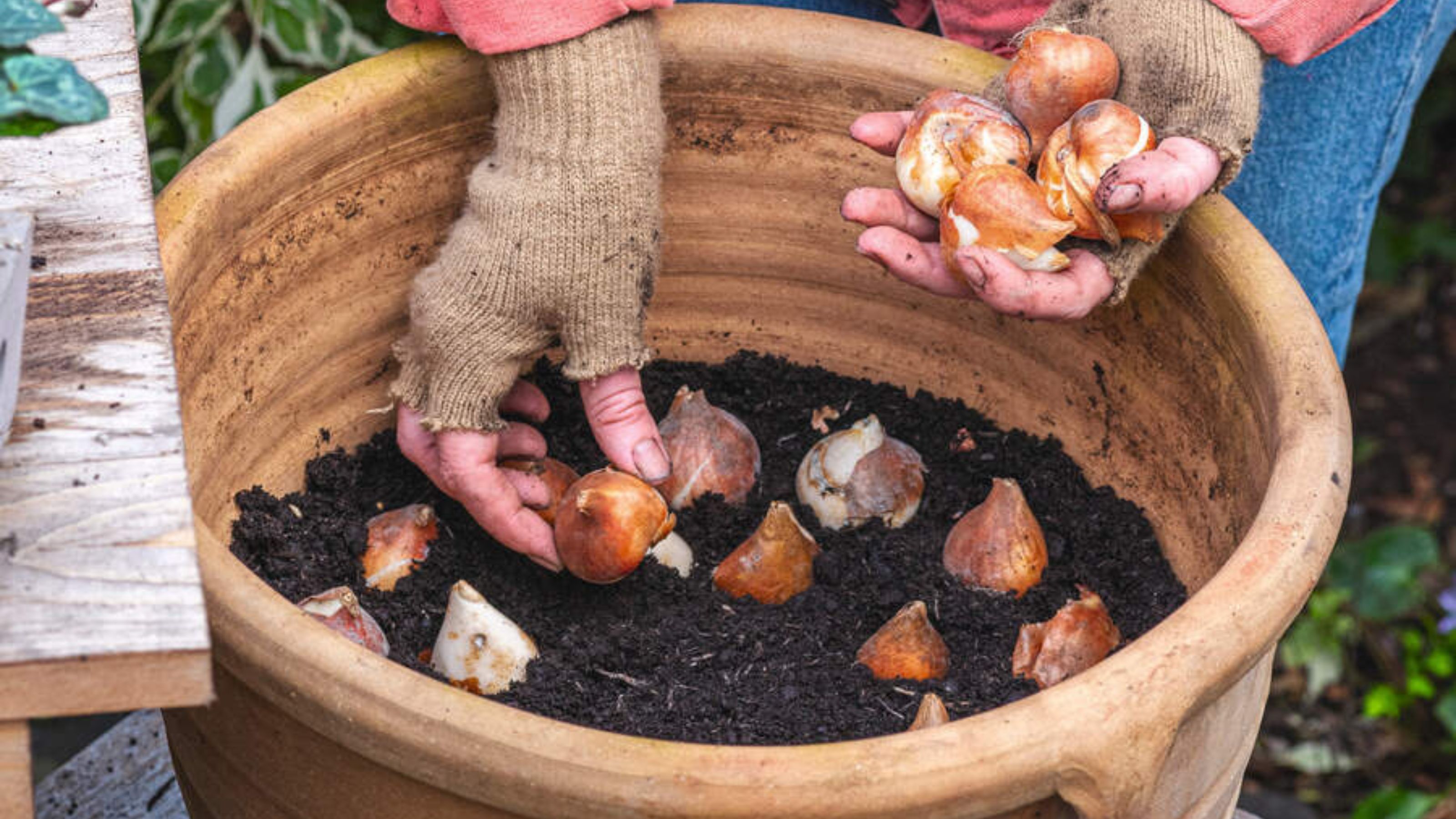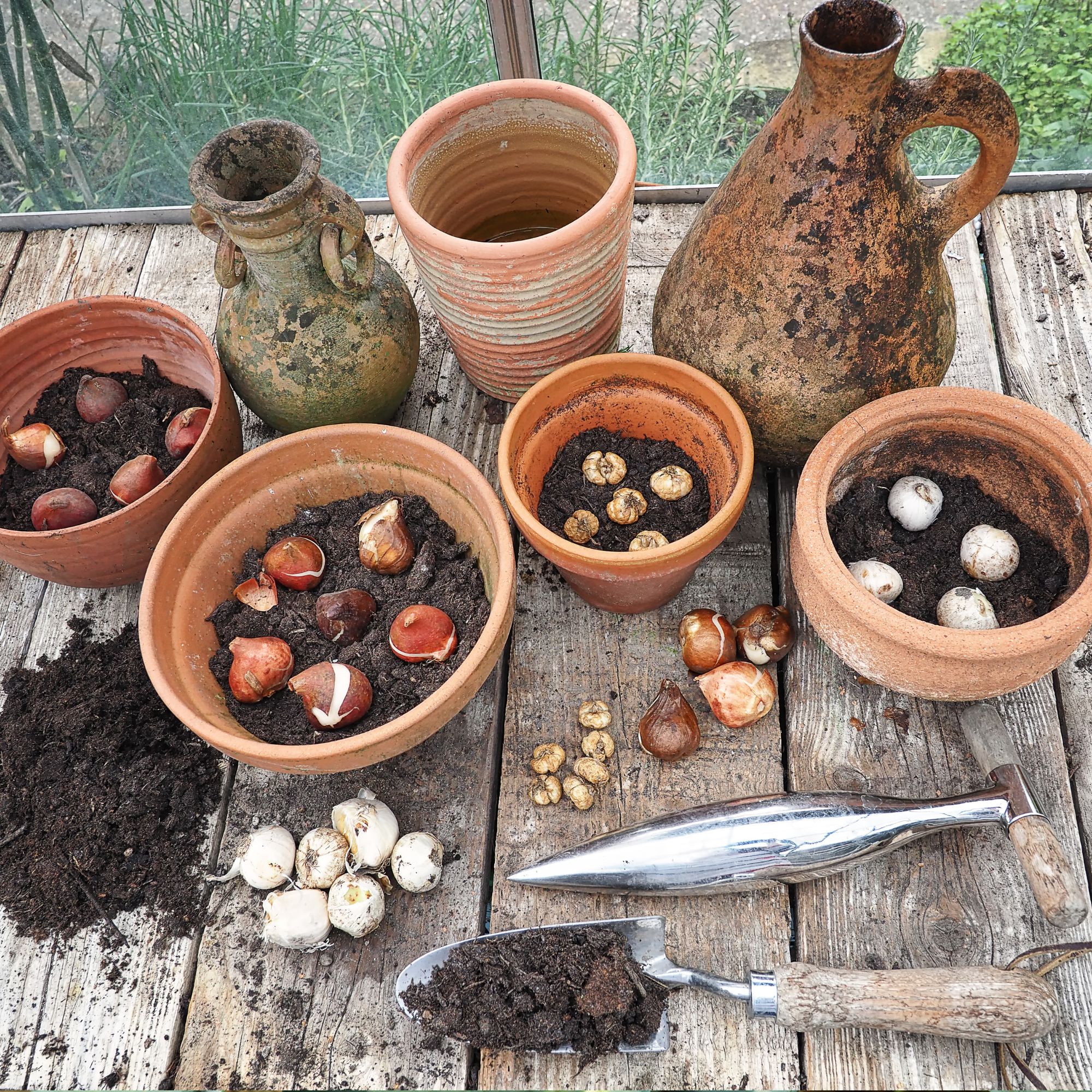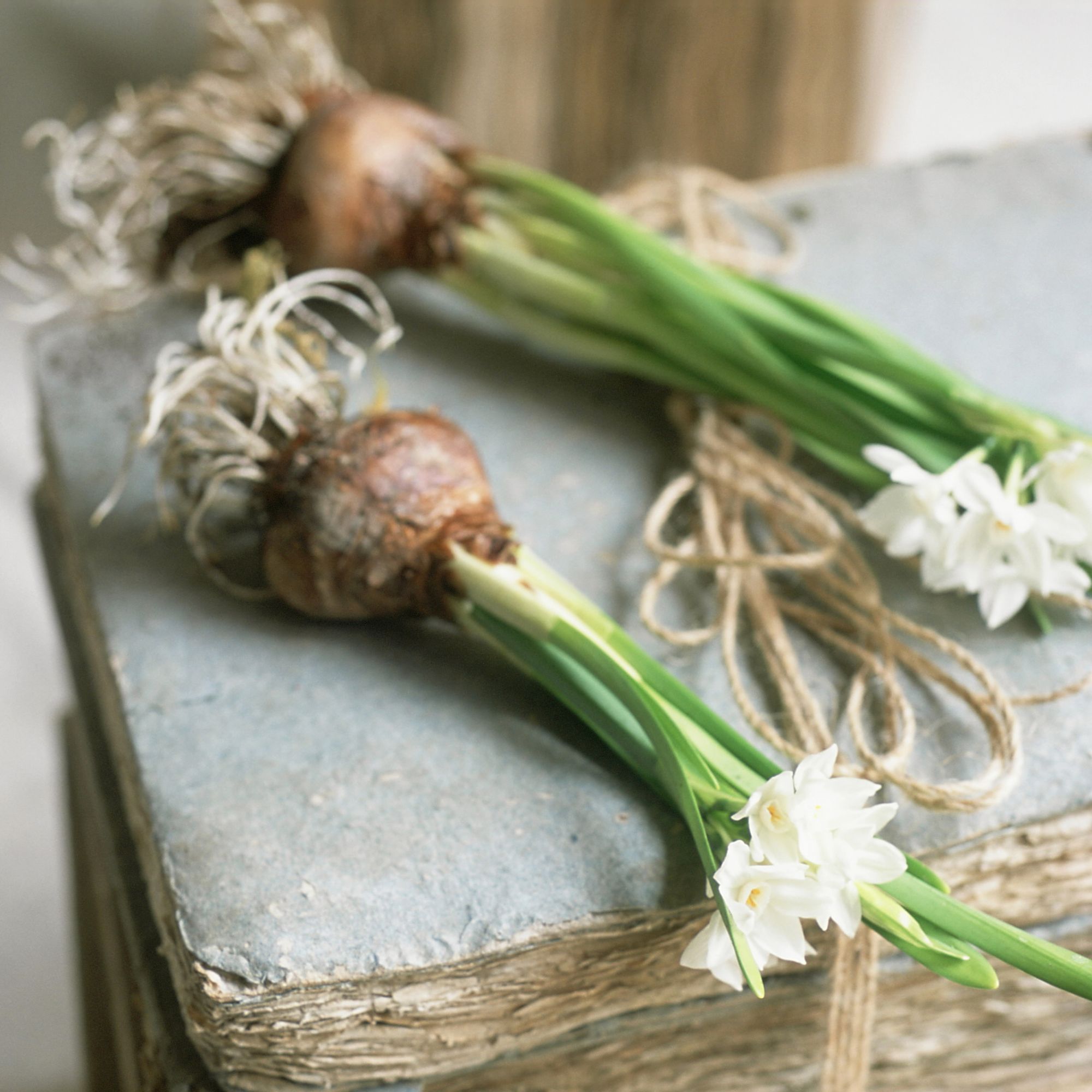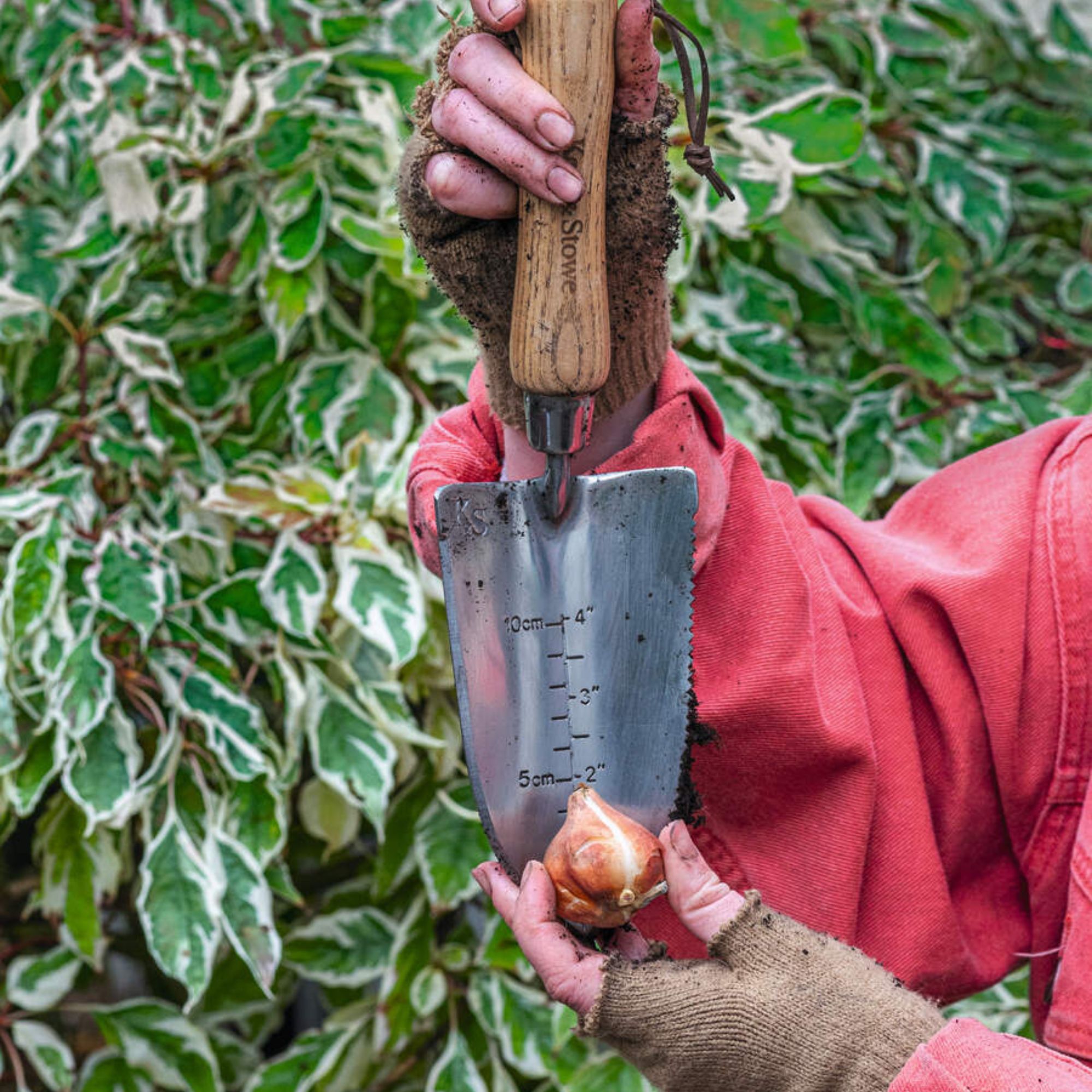Can you plant bulbs too deep? Experts warn gardeners of this common mistake that could have disastrous consequences
How to determine how deep you *really* need to be planting your blooms


Bulbs may be small, but they’re definitely mighty. Packed with enough energy to create stunning flowers at various points throughout the year, these dormant underground food storage organs can dramatically appear above ground in just a few months. But when it comes to planting, can you plant bulbs too deep?
Of course, knowing how to plant bulbs is key to a successful bloom next year. But while many people focus on timings and soil quality, the depth at which you plant your bulbs can also make or break your garden ideas. So, this is something to consider if you want to kit your garden out with tulips, daffodils, crocuses, snowdrops, hyacinths, or maybe some of the best bulbs for scent.
In an effort to figure out whether you can plant bulbs too deep or not, we’ve reached out to garden experts for their take on bulb planting depth.

Can you plant bulbs too deep?
Yes it is possible to plant bulbs too deep. As Morris Hankinson, Managing Director of Hopes Grove Nurseries, explains, ‘Planting bulbs at the correct depth is important to ensure they grow properly. Bulbs need to be planted so they have enough warmth, moisture and light to allow them to grow and eventually bloom.’
Planting bulbs is actually bit like the story of Goldilocks and the Three Bears; you need to get the porridge (i.e. the planting depth) just right. If you plant them too shallow, Tony Williams, Estates Manager at Mount Ephraim Gardens, says it will ‘expose bulbs to weather stress and pests.’ In fact, this will leave them extremely vulnerable to hungry squirrels who want to dig up your bulbs.


Morris Hankinson is the founder and managing director of Hopes Grove Nurseries, the UK’s only specialist grower-retailer of hedging plants. He established the thriving business in 1992, shortly after graduating with a Commercial Horticulture Degree from Writtle College, Essex.
What will happen if you plant your bulbs too deep?
If you plant your bulbs too deep, there’s a high chance that you’ll only notice your mistake in the spring when you're expecting your blooms to emerge. During this time, you might spot one (or a few) of these problems:
1. Stunted growth
If your spring or summer flowering bulbs don’t arrive when you expect them to, you’ve likely planted your bulbs too deep. After all, a deeply planted bulb has to use more energy than it has stored to reach the soil's surface.
Sign up to our newsletter for style inspiration, real homes, project and garden advice and shopping know-how
As a result, it might not emerge at all. The best-case scenario is that it will be able to use enough of its stored energy to pop out of the soil but not enough to produce flowers. So, you’ll only get to enjoy the foliage.
It may be that soaking your bulbs can help prevent this stunted growth, but that’s not always guaranteed.

2. Late blooming
Another symptom of planting your bulbs too deep is late blooming. In this case, you should still be able to enjoy the delights of your flowers - but you just might have to wait a bit longer to see them.
As Tony explains, ‘If a bulb is planted deeper than recommended, it may struggle to push through the soil to reach the surface, resulting in delayed growth or weaker, smaller plants.’
That’s why ensuring you’re planting bulbs at the right time is even more important.

Tony is a keen and experienced gardener who has worked in horticulture across a variety of sites, including Canterbury Cathedral. He is extremely interested in sustainable gardening and strives to avoid polluting chemicals in fertiliser and pest control. He is dedicated to preserving natural resources and reducing water waste wherever possible.
3. Bulb rot
If you want your bulbs come back year after year, you need to take care of them. Unfortunately, planting bulbs too deep can be disastrous for them and cause devastating bulb rot.
Bulb rot is a disease often caused by an excess of moisture, which your bulbs will experience if they are planted too deep in particularly heavy, waterlogged soil. Over time, this disease will turn the roots to mush.
In extreme cases, this will kill the bulb and the plant. If it does survive the bulb rot, your plant may have yellow leaves and experience stunted growth.
How deep should you plant bulbs?
There are many golden rules in the gardening world, from the rule of thirds when pruning shrubs and small trees to watering your garden more thoroughly but less frequently (instead of little and often). Another one is that you should typically expect to plant bulbs at three times their depth.
This is a useful rule to remember if you want to add some bulbs to your garden. Simply measure the bulb from the base to the tip and then triple it to determine how deep you have to dig.
It’s also worth noting that this isn’t the case across the board, though, and as Tony says, ‘Depth tolerance does vary depending on bulb type.’

Morris adds, ‘Always check the planting instructions when you buy bulbs, but as a general rule, smaller bulbs such as crocuses and snowdrops should be planted two to three times the height of the bulb, and larger bulbs such as tulips and alliums need to be planted three to four times the height of the bulb. Daffodils should be planted three times the height of the bulb deep.'
While you can indeed plant bulbs too deep, most experts would agree that planting deeper is always better than planting shallower to protect them from scavengers and the cold. Just make sure you don’t go too overboard.
Thankfully, there’s a way to ensure that you’re planting bulbs correctly. Morris advises, ‘Use a bulb planter which shows measurements on or a trowel and a stick to mark the depth.’
FAQs
Can you plant bulbs the wrong way?
When planting bulbs, you should always aim to plant them with the pointy end up to ensure an easy route up to the soil’s surface.
However, it may not be the end of the world if you plant bulbs the wrong way, as a bulb will always find its way to the surface eventually. You may have delayed flowering if you do this, though.
If you’re not sure which way to plant your bulbs, you could plant them on their side as a good compromise.
What happens if bulbs are planted too shallow?
If you plant bulbs too shallow, there’s a high chance that they won’t survive the winter months. Without enough soil to cover them, the vulnerable bulbs will be exposed to the cold and the frost. Ultimately, this will affect how well they grow.
Alongside this, planting bulbs too shallow will also leave them vulnerable to squirrels, who will then dig your bulbs up and eat them.
Either way, planting bulbs too shallow will often mean that you won’t get to enjoy your blooms in next year’s garden.

Lauren Bradbury has been the Content Editor for the House Manual section since January 2025 but worked with the team as a freelancer for a year and a half before that. She graduated with a Bachelor’s degree in English and Creative Writing from the University of Chichester in 2016. Then, she dipped her toe into the world of content writing, primarily focusing on home content. After years of agency work, she decided to take the plunge and become a full-time freelancer for online publications, including Real Homes and Ideal Home, before taking on this permanent role. Now, she spends her days searching for the best decluttering and cleaning hacks and creating handy how-to guides for homeowners and renters alike, as well as testing vacuums as part of her role as the Ideal Home Certified Expert in Training on Vacuums, having spent over 110 hours testing different vacuum models to date!
